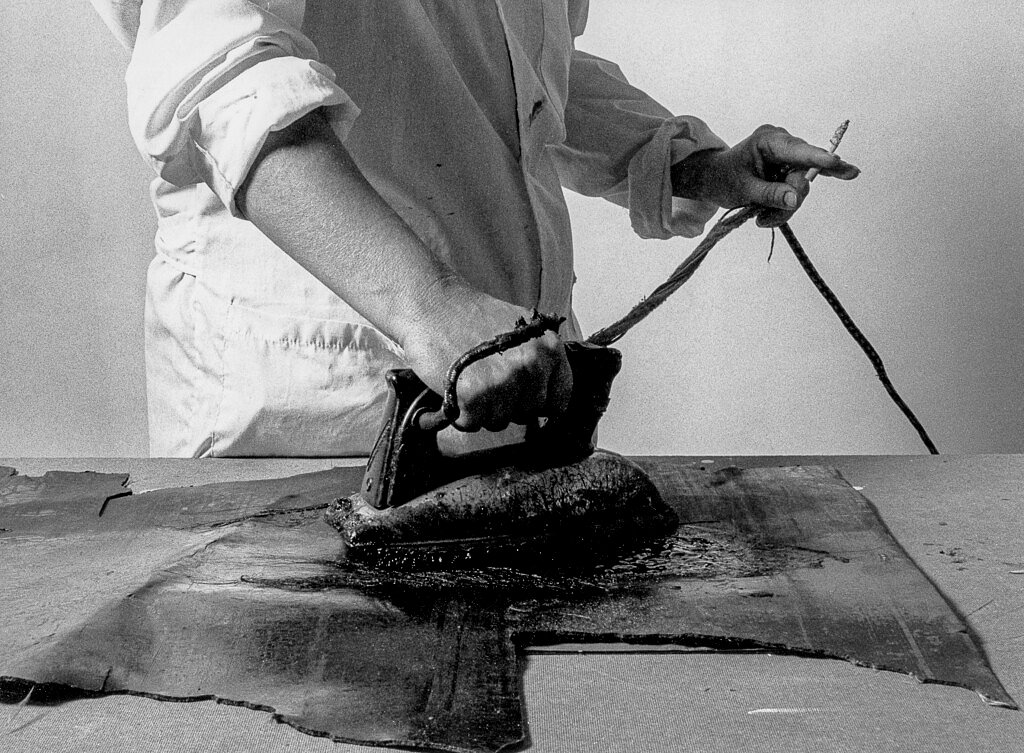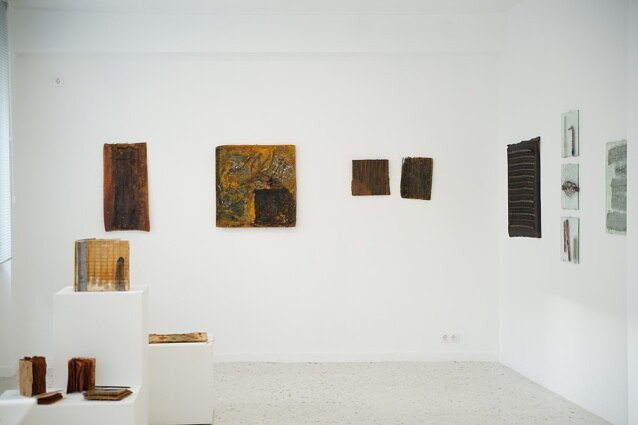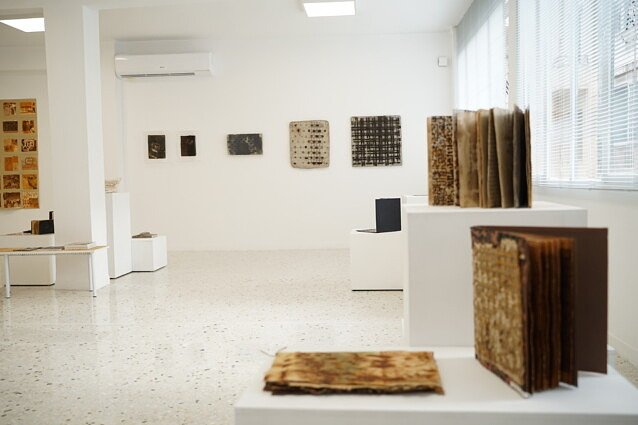Francesca Cataldi
I work
Curated by Paolo Cortese
The anthological exhibition, I WORK, follows Francesca Cataldi’s journey in making art with an array of unconventional materials that she would find in her environment, and which would attract her attention. A collection of two-dimensional and three-dimensional works made from cement, tar, resin, cellulose, and glass capture the essence of that journey.
Her piece ‘La rete’, a work dating back to 1971, where Cataldi began to explore the possibility of leaving the canvas behind and applying wire mesh to it, proved to be seminal.
Since the beginning of her artistic journey Cataldi has proceeded in cycles, by dedicating herself to different materials, studying their characteristics, appropriating them, combining them and subsequently transforming them. As she puts it: “It’s the materials that look for me, not me looking for the materials. They come to me and spark the idea.”
The anthology, I WORK, captures and documents the artist’s research into materials. An exploration which has lasted for more than 50 years, and which brings us a rich body of works in the form of sculptures, panels and book objects, all made with vastly different materials such as cement, tar, resin, paper, cellulose, and glass.
Over the years, Cataldi felt the need to combine the process of her material research and experimentation with the form of narration, something that is well documented via the presentation of a large panel in which the artist summarises her stories. This autobiographical element is also present in some of her works where the artist represents herself in an original and coherent way, either literally in photographic form, or in more abstract references.
In Cataldi’s practice, her use of wire as a thread or a fibre is prevalent, be it a wire made of tar, copper or iron. By not using traditional domestic cotton yarns and threads, this makes her a special case in the universe of fibre art, yet she was included in the most important exhibitions of this field curated by Mirella Bentivoglio and Sveva Lanza in the 1980s.
Within her work, the conceptual drive is closely connected with the gestural one, in the same way that research and experimentation are in dialogue with juxtaposition and narration. This happens as if in a response to an inner request for justice that the artist welcomes and fulfils – she creates works whose stories require years of research and experimentation in order to be told, as in the case of her artist’s books and large wall panels.

The exhibition, organised under the auspices of the Italian Cultural Institute of Athens, is part of the project “Le ragazze di Mirella” (Mirella’s girls) that Gramma_Epsilon Gallery dedicates to Mirella Bentivoglio, and the artists she supported. The exhibit will be followed by a catalogue edited by Paolo Cortese with contributions from Francesca Cataldi, Micol Forti, Azzurra Pizzi.
Biography
Francesca Cataldi (b. 1944) studied at the Academy of Fine Arts in Naples under the guidance of Spinosa, where she developed an informal and material painting. She moved to Rome when very young, where she still works and resides. In the 1970s, she transformed chromatic matter into physical matter, and non-traditional artistic materials such as tar, cement, cellulose, glass, fiberglass and metals were added in her works. By following the rules and laws of these materials, and by associating chemical and physical action, corruption and alchemical transformations, she interpreted them and used them to explore new boundaries.
Since the end of the 1970s she has been creating book objects and artist’s books with the most diverse materials and she has been exhibited in major exhibitions in Italy and abroad. In recent years, she has approached the digital world and created a series of large panels and videos that narrate interesting stories often connected to the female world.
Cataldi taught in Trier for over 30 years and exhibited regularly in Italy and abroad in public and private spaces, including the Venice and the San Paolo Biennial.








